SparkLAN Communications WSDB104GNIBT 802.11b/g/n WiFi+BT IOT Module User Manual 15 WSDB 104GNI BT UserMan
SparkLAN Communications, Inc. 802.11b/g/n WiFi+BT IOT Module 15 WSDB 104GNI BT UserMan
Contents
- 1. 15_WSDB-104GNI(BT) UserMan
- 2. User Manual_20180101_v1 - 8. User Manual Rev.1
15_WSDB-104GNI(BT) UserMan
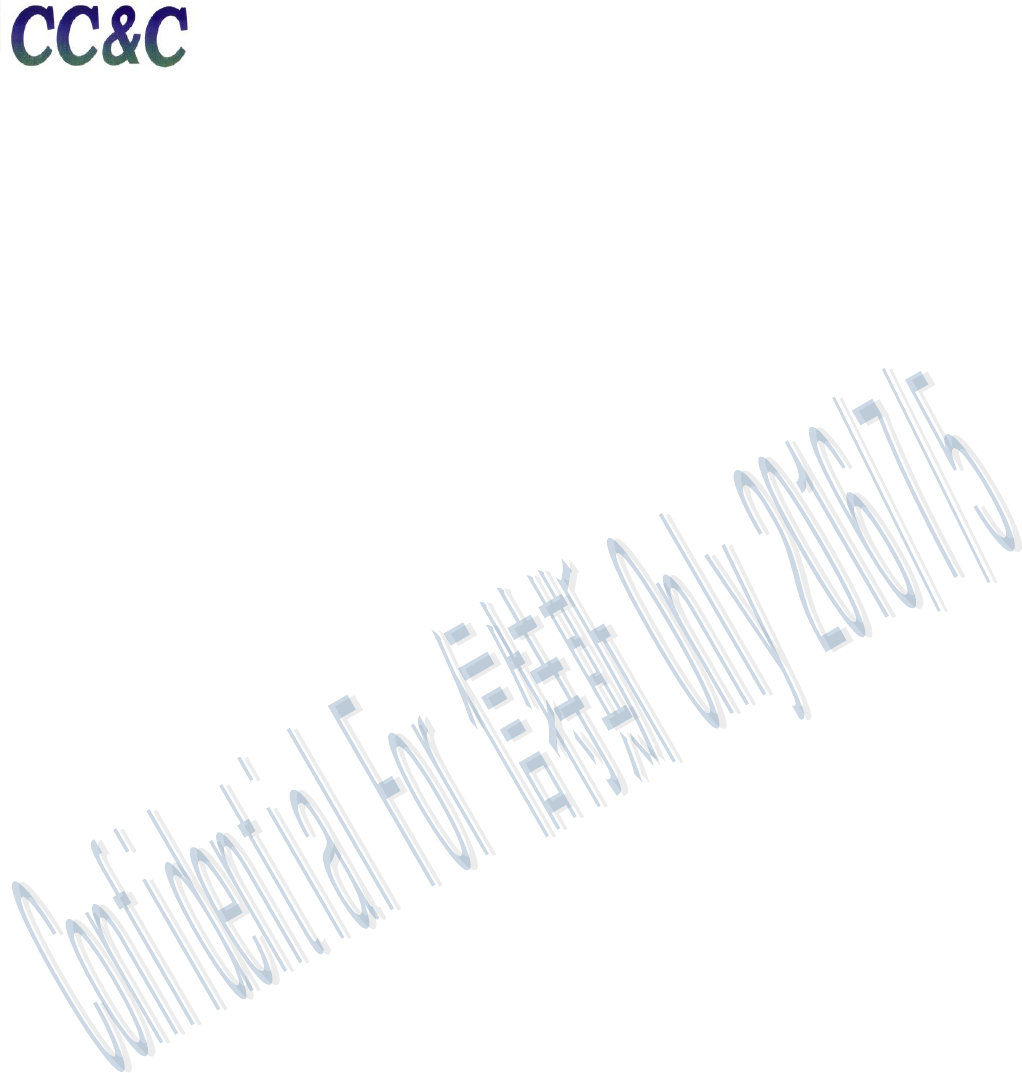
1
晶訊科技股份有限公司
CC&C Technologies, Inc.
User manual
11n+ BT WiFi module (SDIO)
SDIO interface for WLAN
HS-UART interface for Bluetooth
Version: 1.0
Release date: 20160705
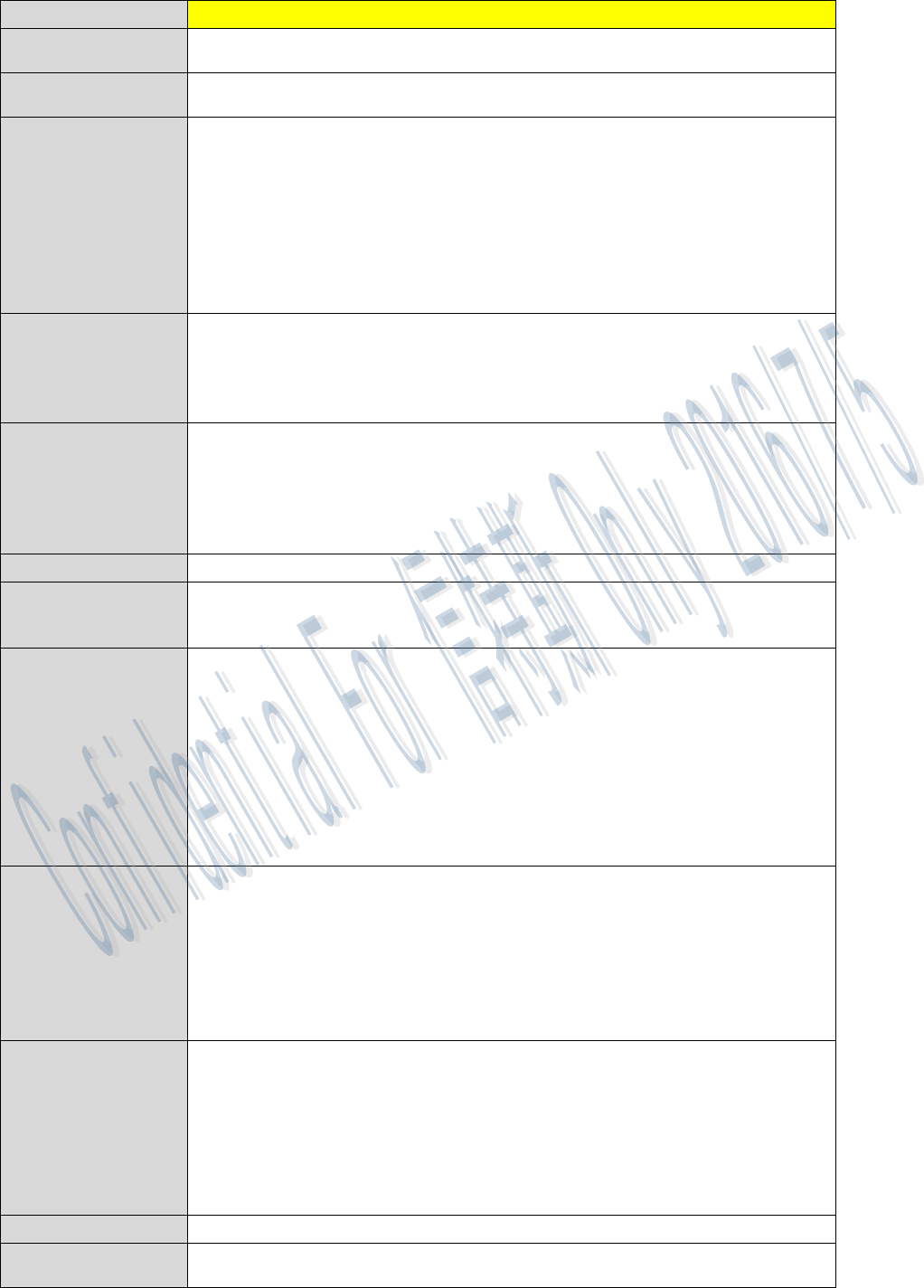
2
General Specification
Model Name
Product Name
802.11b/g/n WiFi+ BT IOT module
※SDIO interface for WLAN and HS-UART interface for Bluetooth
Standards
IEEE 802.11b/g/n/d/e/h/i
Bluetooth v2.1+EDR/ v3.0/ v3.0+HS/ v4.1
Data Transfer Rate
WLAN:
802.11b: 11, 5.5, 2, 1 Mbps
802.11g: 54, 48, 36, 24, 18, 12, 9, 6 Mbps
802.11n: MCS0 to 7 for HT20MHz
Bluetooth:
Basic rate: 1Mbps
Enhanced data rate: 2, 3 Mbps
High Speed: 6, 9, 12, 18, 24, 36, 48, 54 Mbps
Modulation Method
WLAN:
802.11b: CCK, DQPSK, DBPSK
802.11g: 64QAM, 16QAM, QPSK, BPSK
802.11n: 64QAM, 16QAM, QPSK, BPSK
Bluetooth: 8DPSK, π/4 DQPSK, GFSKFSK
Operating Channel
WLAN 2.4GHz:
11: (Ch. 1-11) – United States
13: (Ch. 1-13) – Europe
14: (Ch. 1-14) – Japan
BT 2.4GHz:
Ch. 0 to 78
Frequency Range
2.4GHz ISM band (2.400GHz to 2.4835 GHz)
Spread Spectrum
WLAN IEEE 802.11b: DSSS (Direct Sequence Spread Spectrum)
WLAN IEEE 802.11g/n: OFDM (Orthogonal Frequency Division Multiplexing)
Bluetooth: FHSS (Frequency Hopping Spread Spectrum)
RF Output Power
(tolerance ±1.5dBm)
WLAN:
17dBm – 802.11b@11Mbps
15dBm – 802.11g@6Mbps
15dBm – 802.11g@54Mbps
13dBm – 802.11n@MCS0_HT20
13dBm – 802.11n@MCS7_HT20
Bluetooth:
Output Power : Class1
Network architecture
WLAN:
Ad hoc mode (Peer-to-Peer)
Infrastructure mode
Software AP
WiFi Direct
BT:
Pico Net
Scatternet
Receiver Sensitivity
WLAN:
-76dBm – 802.11b@11Mbps
-65dBm – 802.11g@54MBps
-64dBm – 802.11n@MCS7_HT20
Bluetooth:
-89dBm@1Mbps
-90dBm@2Mbps
-83dBm@3Mbps
OS Support
Windows XP/ Linux/ Android
Security
WLAN: WEP, WPA Personal, WPA2 Personal, WMM, WMM-PS(U-APSD), WMM-SA, WAPI,
AES(Hardware Accelerator), TKIP(host-computed), CKIP(SW Support)
WSDB-104GNI(BT)
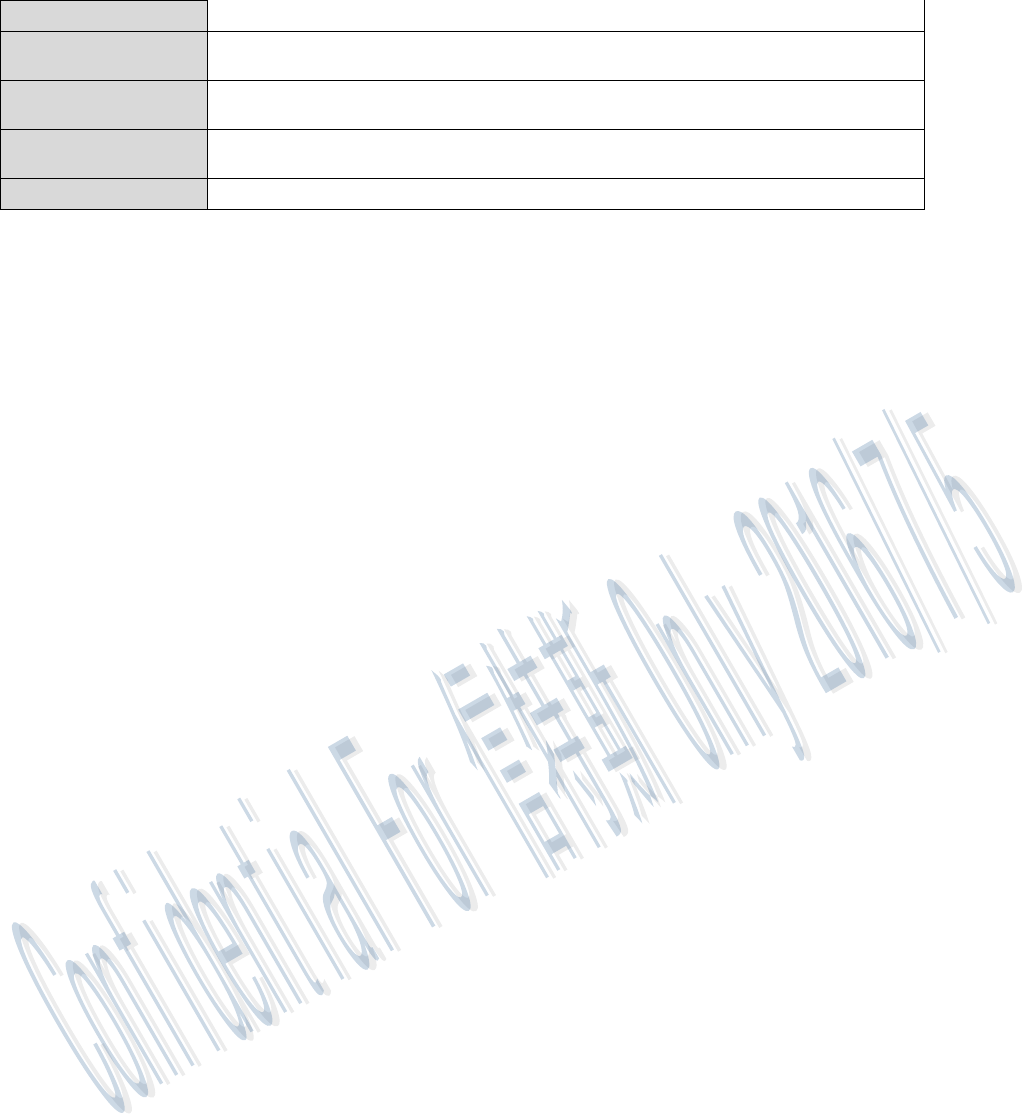
3
BT: Simple Paring
Bus interface WLAN: SDIO 2.0
BT: High Speed UART
Operating Temperature
-20 ~ 60° C ambient temperature
5 to 90 % (non-condensing)
Storage Temperature
-20 ~ 70°C ambient temperature
0 to 95 % (non-condensing)
Dimension
19 x 12 x 2 mm (LxWxH)
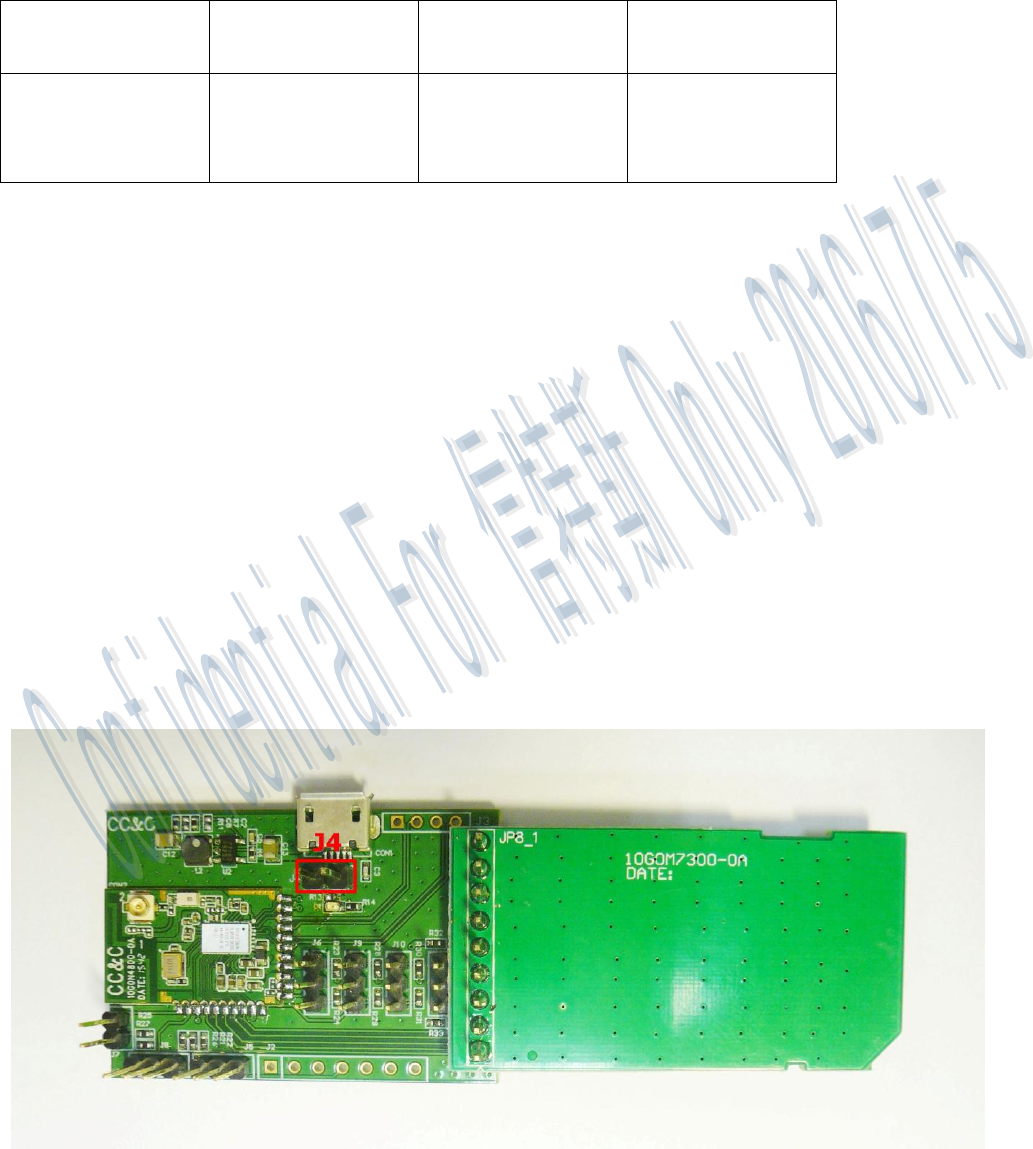
4
1. Power Supply
The CM-43438-V1 module supports SDIO bus power level DC 3.3V, 2.8V or 1.8V. If the voltage level
of SDIO bus is DC 3.3V, like most PC or NB, then CM-43438-V1 can be powered by this single DC 3.3V
from SDIO bus. But if the voltage level of SDIO bus is DC 2.8V or 1.8V, most the embedded platforms.
SDIO bus power
Supply
3.3V
2.8V
1.8V
Jumper 4
Short Jumper4
(Plug in jumper
connector)
Open Jumper4
(Remove jumper
connector)
Open Jumper4
(Remove jumper
connector)
WiFi interface and SDIO bus power option
The WiFi interface on CM-43438-V1 is SDIO, and it works under different SDIO bus power conditions such
as DC 3.3V, 2.8V or 1.8V.
Please open the connector of J4 to provide an additional DC 3.3V power supply to CM-43438-V1 when it be
used under SDIO bus power of DC 2.8V or 1.8V(The additional DC 3.3V is supplied from a PWM circuit from
power of micro-USB, so remember to connect DC power into the micro-USB).
Please close the connector of J4 when SDIO bus power is DC 3.3V.
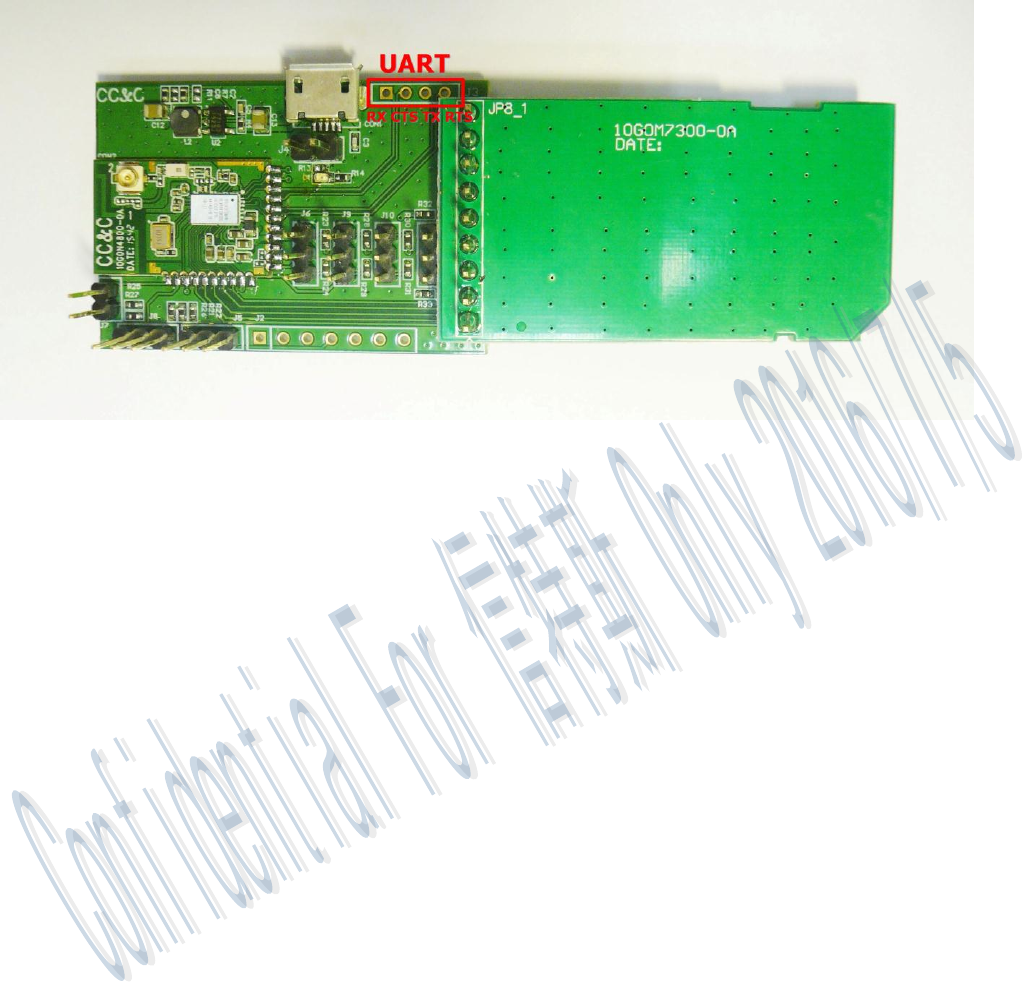
5
Bluetooth interface
The Bluetooth interface on CM-43438-V1 is through UART, provided signal of UART Tx, Rx, RTS, CTS pins.
2. Power on sequence
1. Use an USB cable to connect the USB connector of EVB to a PC USB port, to supply DC 5V to
EVB.
2. Plug in SD adapter into your target platform.
3. Your platform will acknowledge the CM-43438-V1 module.

FCC Warning
This device complies with Part 15 of the FCC Rules. Operation is subject to the following two conditions:
(1) this device may not cause harmful interference, and
(2) this device must accept any interference received, including interference that may cause undesired operation.
NOTE: Any changes or modifications to this unit not expressly approved by the party responsible for compliance
could void the user's authority to operate the equipment.
FCC Radiation Exposure Statement:
This equipment complies with FCC radiation exposure limits set forth for an uncontrolled environment. End users
must follow the specific operating instructions for satisfying RF exposure compliance.
Note 1: Compliance of this device in all final host configurations is the responsibility of the Grantee.
OEM integrators are responsible to satisfy RF exposure requirements. SAR evaluation is valid for portable,
mobile and fixed applications.
Note 2: Any modifications made to the module will void the Grant of Certification, this module is limited to OEM
installation only and must not be sold to end-users, end-user has no manual instructions to remove or install the
device, only software or operating procedure shall be placed in the end-user operating manual of final products.
Note 3: The device must not transmit simultaneously with any other antenna or transmitter.
Note 4: To ensure compliance with all non-transmitter functions the host manufacturer is responsible for ensuring
compliance with the module(s) installed and fully operational. For example, if a host was previously authorized as
an unintentional radiator under the Declaration of Conformity procedure without a transmitter certified module
and a module is added, the host manufacturer is responsible for ensuring that the after the module is installed and
operational the host continues to be compliant with the Part 15B unintentional radiator requirements. Since this
may depend on the details of how the module is integrated with the host, Spark L AN Communications, Inc shall
provide guidance to the host manufacturer for compliance with the Part 15B requirements.
Note 5: FCC ID label on the final system must be labeled with “Contains FCC ID: RY K -W SDB10 4GN I BT ” or
“Contains transmitter module FCC ID: R Y K -W SDB10 4GNIBT”.
The transmitter module must be installed and used in strict accordance with the manufacturer's instructions as
described in the user documentation that comes with the host product.Spark L AN Communication, Inc is responsible
for the compliance of the module in all final hosts.